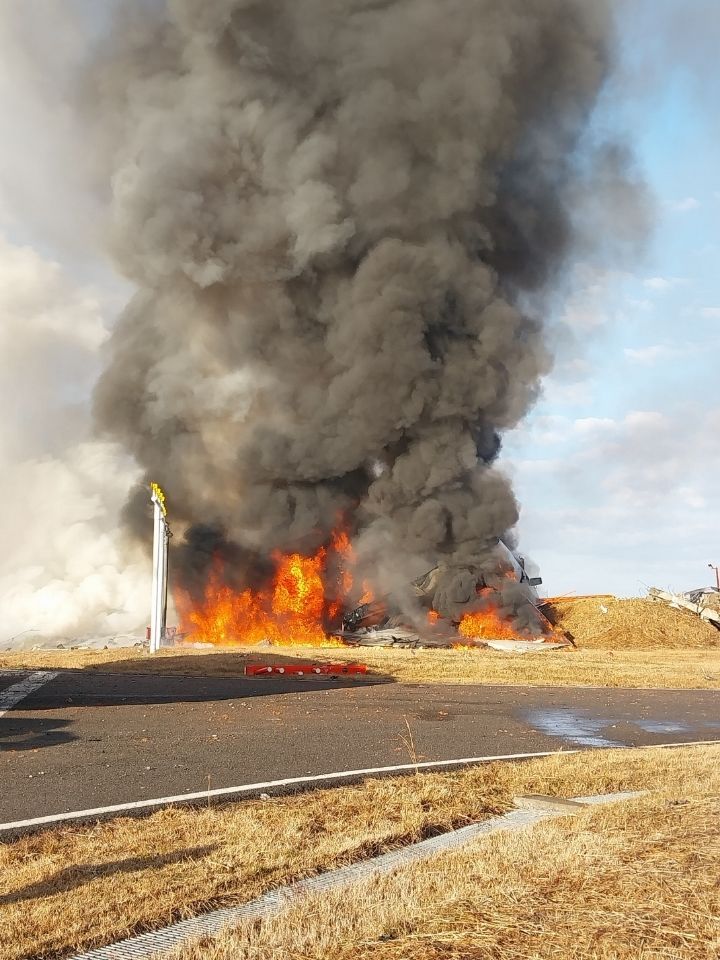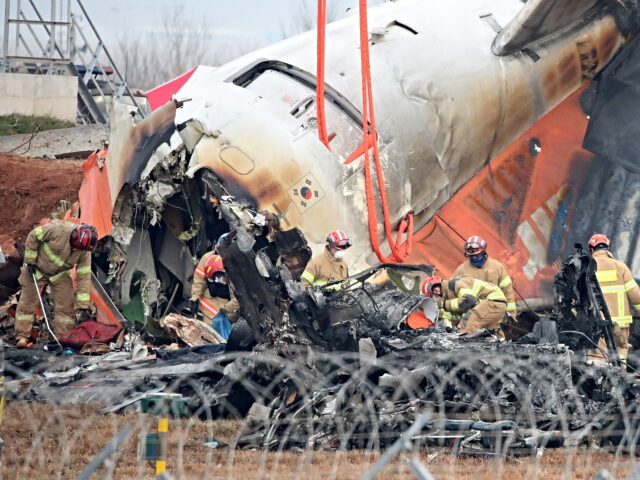South Korean acting president Choi Sang-mok on Monday ordered an emergency inspection of safety procedures for the entire national air travel system after the horrible crash of a Jeju Air plane on Sunday killed all 179 passengers, plus four of the aircraft’s six crew members.
Sunday’s tragedy proved to be the deadliest aviation accident in South Korea’s history. The Boeing 737-800 jetliner attempted a belly landing at Muan International Airport after its landing gear failed to deploy, skidded out of control on the runway, and burst into flames after slamming into a concrete wall.
Rescue workers warned the early casualty estimates would likely grow worse as more bodies were recovered from the fiery wreckage and in the end there were only two survivors, both flight attendants. Most of the passengers were South Korean nationals returning from holiday vacations in Thailand.
The two survivors, a man and a woman, are reportedly recovering in separate hospitals. The male was conscious and speaking to doctors on Monday after receiving intensive care for bone fractures. The female survivor is also awake, and is not in intensive care.
As of Monday morning, 38 of the victims had not been identified. The plane’s flight data recorders have been recovered and will be analyzed by representatives from Boeing and the U.S. National Transportation Safety Board (NTSB). Muan International Airport will remain closed until Wednesday at the earliest.
President Choi, who became South Korea’s acting president only two days before the accident when his predecessor Han Duck-soo was impeached, said the government’s highest priorities are identifying the remaining victims, supporting the families of those who died, and providing medical care for the two survivors.
“Even before the final results are out, we ask that officials transparently disclose the accident investigation process and promptly inform the bereaved families,” Choi said at a disaster management meeting in Seoul on Monday.

In this handout photo provided by the South Korean National Fire Agency, Jeju Air Flight 7C2216 burns after skidding off the runway at Muan International Airport on December 29, 2024 in Muan-gun, South Korea.(South Korean National Fire Agency via Getty Images)
“As soon as the accident recovery is conducted, the transport ministry is requested to conduct an emergency safety inspection of the entire aircraft operation system to prevent recurrence of aircraft accidents,” he said.
The transportation ministry said it would begin by inspecting all 101 of the remaining Boeing 737-800 aircraft operated by South Korean airlines. The ministry said it has “no plans to suspend operations” for all of those planes, but each will receive a thorough inspection.
The crash of Jeju Air Flight 7C-2216 remains a mystery, even though it happened before numerous horrified witnesses and was caught on video. The plane left Bangkok before dawn and arrived in the airspace around Muan International Airport at shortly before 9:00 a.m. local time, receiving routine authorization to land on a south-to-north runway.
Three minutes after granting permission to land, the Muan control tower advised the plane of a possible bird strike. Two minutes after that, the pilot sent a mayday message due to a bird strike and aborted the first landing attempt.
The plane flew around the airport and made another landing approach without its landing gear deployed, evidently trying for a belly landing but coming in much too fast. Investigators are asking why the landing gear did not deploy, why the pilot made such a quick decision to attempt a belly landing, why the plane’s speed was so high when it contacted the runway, and whether any of the aircraft’s other systems were damaged or disabled.
Airline safety experts have questioned the presence of the concrete wall the plane struck during its landing skid, noting that airport construction standards normally call for the end of a runway to be free of such obstructions precisely because they could become hazards during emergency landings.
“Why didn’t fire tenders lay foam on the runway? Why weren’t they in attendance when the plane touched down? And why did the aircraft touch down so far down the runway? And why was there a brick wall at the end of the runway?” Airline News editor Geoffrey Thomas asked on Sunday.
Thomas and other safety experts questioned how a bird strike could have disabled the plane’s landing gear, or why a bird strike would have prompted such a hasty emergency landing attempt. Some noted that even an entire flock of birds getting sucked into the plane’s engines would not have necessitated such a quick emergency landing and, if anything, the plane apparently had too much thrust when it hit the runway.
Thomas pointed out that belly landings are harrowing experiences, but they are relatively safe if the procedure is followed carefully.
“You come in with minimum fuel, you have fire tenders in attendance, covering the runway with foam and you land at the furthest end of the runway, and usually it ends up being an OK situation,” he said.

COMMENTS
Please let us know if you're having issues with commenting.